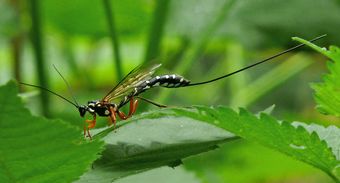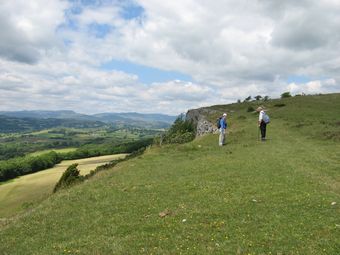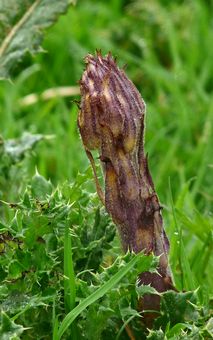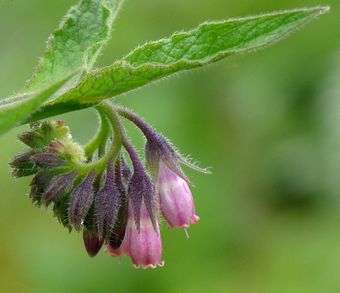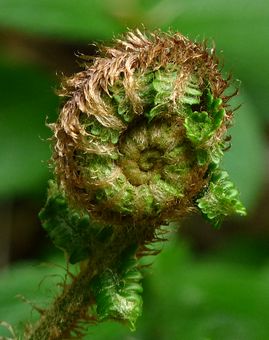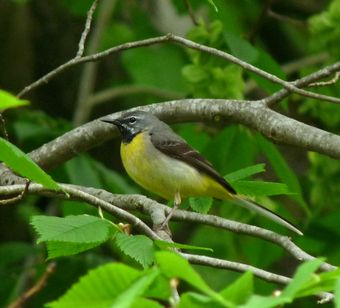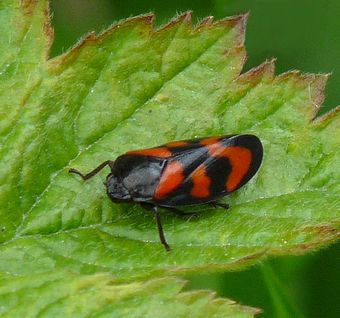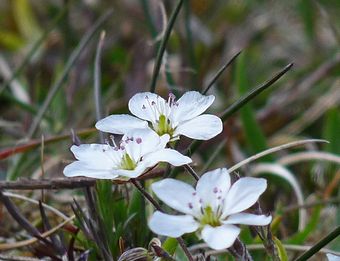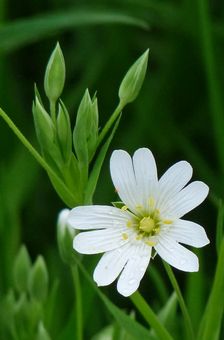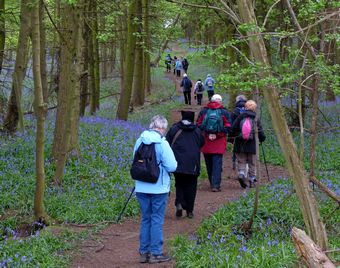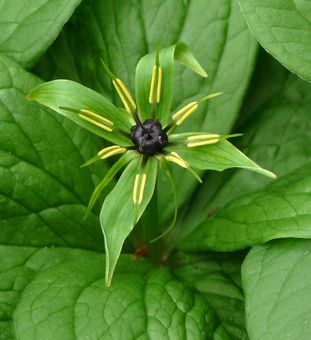WFV, Semer Water, 22nd June 2010
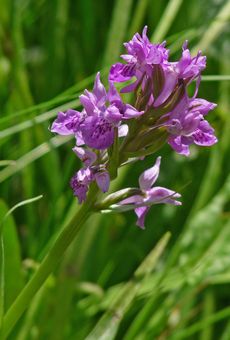 Northern Marsh Orchid14 travelled in the minibus on today's trip to Semer Water which was led by Andrew and Lorna. We were full of anticipation in the gloriously sunny conditions and with a good forecast for the day ahead. On arrival at our base, Raydale Preserves in the hamlet of Stalling Busk, several of the group enjoyed hot drinks/cream teas. It was clouding over and feeling cooler and some of us were wondering if we'd brought enough clothing! However, the clouds dispersed as quickly as they'd gathered and we once again enjoyed warm sunshine which lasted throughout the walk. Our route took us through several traditional hay meadows, so colourful with the abundant wild flowers and the views were stunning. Wood cranesbill, meadow cranesbill, yellow rattle, betony, bitter vetch and even a bluebell were noted. Surprisingly, we also saw a hawthorn in full bloom today. Numerous chimney sweeper moths were flitting between the flowers. Only three butterflies were recorded today - red admiral, small heath and green-veined white. The path descended quite steeply and passed close to a beck with little waterfalls. Although pretty, this would have been more spectacular were it not for the recent dry spell that we've experienced. A strange sight was that of a bird cherry whose branch ends were all covered in a cocoon, probably the work of ermine moth caterpillars. Some areas were quite boggy and we saw different flowers here such as marsh hawksbeard, northern marsh orchid and ragged robin. The ruined 17th century church was our lunch stop, but it was nearly 2.30pm before we got there. Maybe our hunger was a factor when Joan identified a common spike-rush, and this was processed by some in the group as "common pie crust", Growleris deliciosa. I think that name will stick with our group for a while. Whilst enjoying lunch, curlews were reeling and calling overhead, and then we enjoyed a fly past of 4 oystercatchers with 2 curlews just above them. After lunch we headed for Semer Water, a SSSI nature reserve managed by the Yorkshire Wildlife Trust. The lake lies in a glaciated limestone valley. Marsh thistle, melancholy thistle, common spotted orchid and mouse-eared hawkweed were among the 133 flowering plants/ferns recorded. A ringed plover was seen on the shore of the lake, we had several good sightings of redstarts and a lapwing was seen with two chicks. At the end of the lake, we turned onto the uphill road back to Stalling Busk. Some of our day's birding highlights were on this road.
Northern Marsh Orchid14 travelled in the minibus on today's trip to Semer Water which was led by Andrew and Lorna. We were full of anticipation in the gloriously sunny conditions and with a good forecast for the day ahead. On arrival at our base, Raydale Preserves in the hamlet of Stalling Busk, several of the group enjoyed hot drinks/cream teas. It was clouding over and feeling cooler and some of us were wondering if we'd brought enough clothing! However, the clouds dispersed as quickly as they'd gathered and we once again enjoyed warm sunshine which lasted throughout the walk. Our route took us through several traditional hay meadows, so colourful with the abundant wild flowers and the views were stunning. Wood cranesbill, meadow cranesbill, yellow rattle, betony, bitter vetch and even a bluebell were noted. Surprisingly, we also saw a hawthorn in full bloom today. Numerous chimney sweeper moths were flitting between the flowers. Only three butterflies were recorded today - red admiral, small heath and green-veined white. The path descended quite steeply and passed close to a beck with little waterfalls. Although pretty, this would have been more spectacular were it not for the recent dry spell that we've experienced. A strange sight was that of a bird cherry whose branch ends were all covered in a cocoon, probably the work of ermine moth caterpillars. Some areas were quite boggy and we saw different flowers here such as marsh hawksbeard, northern marsh orchid and ragged robin. The ruined 17th century church was our lunch stop, but it was nearly 2.30pm before we got there. Maybe our hunger was a factor when Joan identified a common spike-rush, and this was processed by some in the group as "common pie crust", Growleris deliciosa. I think that name will stick with our group for a while. Whilst enjoying lunch, curlews were reeling and calling overhead, and then we enjoyed a fly past of 4 oystercatchers with 2 curlews just above them. After lunch we headed for Semer Water, a SSSI nature reserve managed by the Yorkshire Wildlife Trust. The lake lies in a glaciated limestone valley. Marsh thistle, melancholy thistle, common spotted orchid and mouse-eared hawkweed were among the 133 flowering plants/ferns recorded. A ringed plover was seen on the shore of the lake, we had several good sightings of redstarts and a lapwing was seen with two chicks. At the end of the lake, we turned onto the uphill road back to Stalling Busk. Some of our day's birding highlights were on this road.
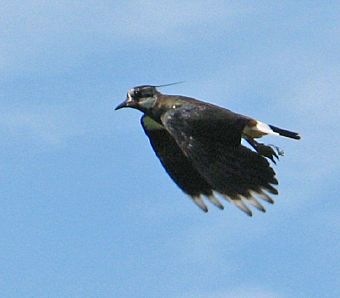 Lapwing in FlightHere the lapwings were quite vociferous as they flew low over our heads suggesting there may have been nests nearby. The alarm call of a redshank alerted us to his presence only about 20 yards away. A skylark, treecreeper, kestrel and meadow pipits were also seen. We got back to base at about 5pm where preserves and hot drinks were purchased, and we spotted a house martin which appeared to be starting some nest building. Today was a feast for both botanists and birdwatchers, 37 species of birds being recorded.
Lapwing in FlightHere the lapwings were quite vociferous as they flew low over our heads suggesting there may have been nests nearby. The alarm call of a redshank alerted us to his presence only about 20 yards away. A skylark, treecreeper, kestrel and meadow pipits were also seen. We got back to base at about 5pm where preserves and hot drinks were purchased, and we spotted a house martin which appeared to be starting some nest building. Today was a feast for both botanists and birdwatchers, 37 species of birds being recorded.
Sue

